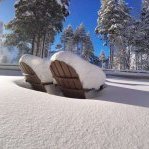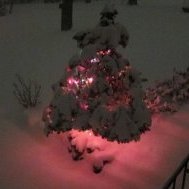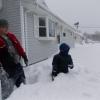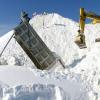
Typhoon Tip
Meteorologist-
Posts
41,643 -
Joined
-
Last visited
About Typhoon Tip

Profile Information
-
Gender
Not Telling
Recent Profile Visitors
-
July 2025 Obs/Disco ... possible historic month for heat
Typhoon Tip replied to Typhoon Tip's topic in New England
Euro’s being chintzy with the pattern but this latest GFS was a torch run -
Occasional Thoughts on Climate Change
Typhoon Tip replied to donsutherland1's topic in Climate Change
UHI working on top of AGW is meso scale harmonic feedback right there. It’s basically a synergistic heat example … scale notwithstanding -
July 2025 Obs/Disco ... possible historic month for heat
Typhoon Tip replied to Typhoon Tip's topic in New England
AFD yesterday was 'slow moving' but sure... I don't really look that HRRR at my loss perhaps -
July 2025 Obs/Disco ... possible historic month for heat
Typhoon Tip replied to Typhoon Tip's topic in New England
I think it is interesting how badly the storm motion was forecast. this things are pacing right along and they were supposed to be slow movers -
July 2025 Obs/Disco ... possible historic month for heat
Typhoon Tip replied to Typhoon Tip's topic in New England
`That may not be right anyway... I was snarking that based upon the AFD from KBOX yesterday that described warm core heights being that high. That's definitely not a hail risk. However, about an hr ago, a small TCU glaciated and ripped the anvil NE so there's ice up there. Which btw, they were talking about cell motions as being very slow and back building. not sure on the latter, but these CBs are tilting from velocity shear and peeling away downstream looking at this.. https://weather.cod.edu/satrad/?parms=subregional-New_England-02-24-1-100-1&checked=map&colorbar=undefined -
July 2025 Obs/Disco ... possible historic month for heat
Typhoon Tip replied to Typhoon Tip's topic in New England
with freezing levels at 14K ? good luck -
July 2025 Obs/Disco ... possible historic month for heat
Typhoon Tip replied to Typhoon Tip's topic in New England
God I hope that's intended for laughs ...ya never know... -
July 2025 Obs/Disco ... possible historic month for heat
Typhoon Tip replied to Typhoon Tip's topic in New England
i saw that sneaky bastard too. ha -
July 2025 Obs/Disco ... possible historic month for heat
Typhoon Tip replied to Typhoon Tip's topic in New England
culturally it's usually provincials that put all their eggs in that one thing, after they've fed a vacation jar 5 bucks and change a day for a year. Just for that one all-inclusive cruise-line deal. ...I think don't they have 'budget cruises' with neat and tidy packages for those that don't come along with fuck you money? -
July 2025 Obs/Disco ... possible historic month for heat
Typhoon Tip replied to Typhoon Tip's topic in New England
we actually still touched 91 here ... 90 next door at KFIT despite the clouds. It was a 'silently remarkable' day for warmth considering there was little direct sun or none some 70 or 80% of the time. There's kind of a perhaps "bun worthy" eeriness when it's completely cloudy and 90 F, which at one moment yesterday that occurred here. it's just weird - anyway, we're probably a 1/2 hour if that away from verifying a heat wave in this part of the AFD -
July 2025 Obs/Disco ... possible historic month for heat
Typhoon Tip replied to Typhoon Tip's topic in New England
Under the heading of situational awareness ... Chantal's remnants are currently passing just SE of the Islands and it's influence on the synoptics this morning ... I don't think the models handled very well. ...spanning around the N-W arc there is DVM, the axis of which is right over us. NVA/DVM on the west side, outside the circulation, is not atypical as TC's rise in latitude. You can also see that influence on the vis loop as cloud decay and deep blue skies opened up. MET and MAV machine is OV and yet there are few of any clouds at all at 50 miles of sky in all directions. This is a still-air bake we are in for this morning as a result. Through a high launch pad and DPs very think in the sounding. Yuck. ..until the convective temperature is reached, these obs and trends suggest we don't have cloud shade. And little or no air movement to offer those little moments of ah ventilation. go above machine for highs. It's 86 here at 9am, am MET FIT is 89-ish for a high. -
July 2025 Obs/Disco ... possible historic month for heat
Typhoon Tip replied to Typhoon Tip's topic in New England
models appear to smear the remnants of Chantal along and S of that gradient -
July 2025 Obs/Disco ... possible historic month for heat
Typhoon Tip replied to Typhoon Tip's topic in New England
general line of TCU punching the alto stratus gunk lined up along the southern horizon, connecting your downpours to some training in CT. Obs show DPs are 75 to 80 S of that line, and 68 to 72 up my way. It's a modest theta-e gradient but the interface is collocated with convection. Also, temps generally 82 to 86 in the soup, and 88 to 92 up here where it's modestly drier. -
July 2025 Obs/Disco ... possible historic month for heat
Typhoon Tip replied to Typhoon Tip's topic in New England
yeah, more meme-able adjectives. LOL make it worth doom-scrolling time with quality dystopian addiction drip. j/k. I used to like the term "thundershowers" ? They used to have that in NOAA weather radio days of like circa 1978... I know ( dating myself...) because I was lad then, curled up with my AM radio like "normal kids" would cuddle a pet, waiting for the next pre-recorded run through of the forecast hoping and praying for a tornado watch. Anyway, when they said thundershowers, I knew it wasn't a big deal. They said thunderstorms when there were elevated risk days. -
July 2025 Obs/Disco ... possible historic month for heat
Typhoon Tip replied to Typhoon Tip's topic in New England
sorry about all that... I'm furloughed this week so idle hands. LOL -












